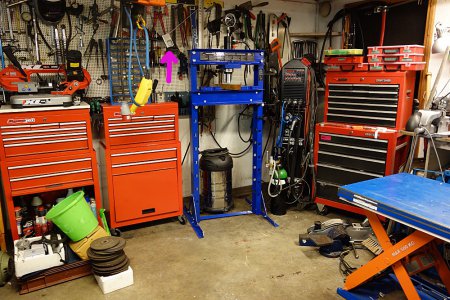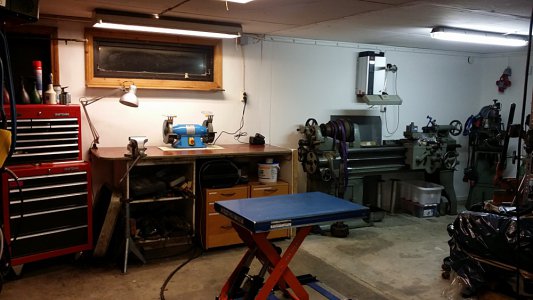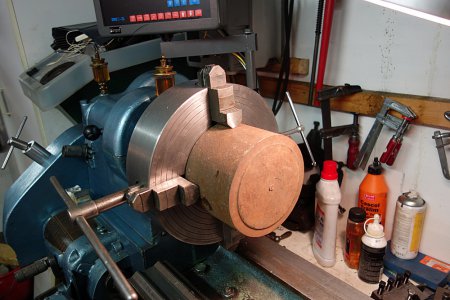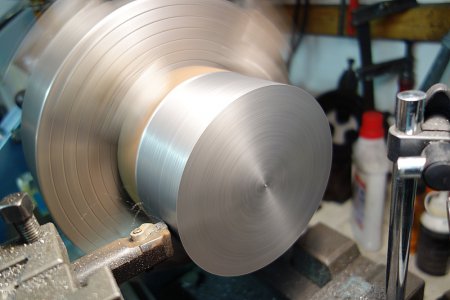-
Welcome back Guest! Did you know you can mentor other members here at H-M? If not, please check out our Relaunch of Hobby Machinist Mentoring Program!
- Forums
- GENERAL TYPES OF METALWORKING MACHINES
- ANTIQUE & VINTAGE MACHINERY
- MISC ANTIQUE & VINTAGE MACHINERY
You are using an out of date browser. It may not display this or other websites correctly.
You should upgrade or use an alternative browser.
You should upgrade or use an alternative browser.
Micke's Vintage Munktell Lathe
- Thread starter Micke S
- Start date
- Joined
- Oct 9, 2014
- Messages
- 465
- Joined
- Feb 2, 2013
- Messages
- 3,963
looks like a sweet set up you got there Micke!

- Joined
- Oct 9, 2014
- Messages
- 465
Thank you Mike !
This evening I'll get a brand new 5.5 kW (7.5 hp) high efficiency motor (IE2, W22 rated) for free, and will connect it to the VFD and bench test it. The motor is built in 2011. It is not a cheap China-motor so the weight is 150 pounds (67 kg). I think the motor will produce very high torque at low RPM's since it is only 1450 RPM nominally, on 50 Hz. The motor is allowed to be used on up to 3000+ rpm with a VFD, and I use a 2:1 reduction for the drive belt. The lathe will then turn 725 RPM max on 50 Hz, or 1450 rpm on 100 Hz with the VFD. I think this should be more than enough, and needs to limit the RPM anyway to a reasonable level so the glide bearings don't overheat. I don't think I'm over 1000 rpm ever on the Örn/Storebro lathe I use now.
I have 3-phase 380V (between phases) power here. The motor is a 380/660 V motor, which is not optimal since it then needs to be Delta-coupled instead of Star-coupled. This means it will draw about 10 amps on full load. This is not a problem since I have 20 amp main fuses but the start-current for at Delta-coupled motor, which operates on 10 amp, is very high. I guess it will be in the region of 50 amps. But since I'll be using a VFD (rated for 7.5 kW/10 hp), I think the start current will be limited to the same as the running current (10 amps) so it will work fine.
I'm not sure I'm correct, but believe the VFD reduces the voltage vs. frequency to keep the current more or less constant, hence limit it to 10 amps in this case.
Follow up to come...
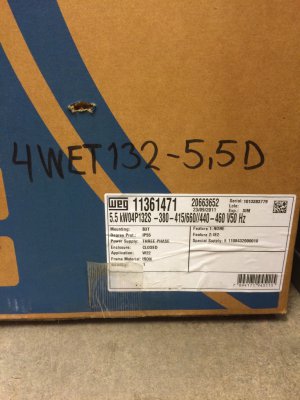
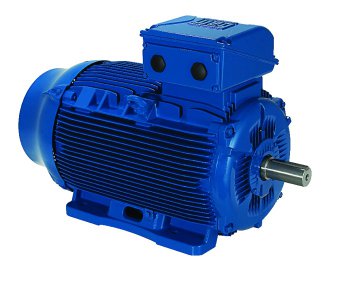
This evening I'll get a brand new 5.5 kW (7.5 hp) high efficiency motor (IE2, W22 rated) for free, and will connect it to the VFD and bench test it. The motor is built in 2011. It is not a cheap China-motor so the weight is 150 pounds (67 kg). I think the motor will produce very high torque at low RPM's since it is only 1450 RPM nominally, on 50 Hz. The motor is allowed to be used on up to 3000+ rpm with a VFD, and I use a 2:1 reduction for the drive belt. The lathe will then turn 725 RPM max on 50 Hz, or 1450 rpm on 100 Hz with the VFD. I think this should be more than enough, and needs to limit the RPM anyway to a reasonable level so the glide bearings don't overheat. I don't think I'm over 1000 rpm ever on the Örn/Storebro lathe I use now.
I have 3-phase 380V (between phases) power here. The motor is a 380/660 V motor, which is not optimal since it then needs to be Delta-coupled instead of Star-coupled. This means it will draw about 10 amps on full load. This is not a problem since I have 20 amp main fuses but the start-current for at Delta-coupled motor, which operates on 10 amp, is very high. I guess it will be in the region of 50 amps. But since I'll be using a VFD (rated for 7.5 kW/10 hp), I think the start current will be limited to the same as the running current (10 amps) so it will work fine.
I'm not sure I'm correct, but believe the VFD reduces the voltage vs. frequency to keep the current more or less constant, hence limit it to 10 amps in this case.
Follow up to come...


Last edited:
Micke,
You have purchased a most powerful and handsome machine, I must confess to concurring with Daryl , I would be most reluctant to alter her to a vee belt drive, As well as having a good powerful lathe you also have an excellent historical item, with lovely proportioned features the big flat pulleys being one prominent feature, The modern flat belting supplied nowadays drives as well as a V belt, If you collect her matching cone pulley and bearing assembly, you could build a nice drive assembly behind the lathe
You have purchased a most powerful and handsome machine, I must confess to concurring with Daryl , I would be most reluctant to alter her to a vee belt drive, As well as having a good powerful lathe you also have an excellent historical item, with lovely proportioned features the big flat pulleys being one prominent feature, The modern flat belting supplied nowadays drives as well as a V belt, If you collect her matching cone pulley and bearing assembly, you could build a nice drive assembly behind the lathe
- Joined
- Oct 9, 2014
- Messages
- 465
I fully agree and thank You for the kind words! I'll order a new endless flat belt when I've fabricated a motor stand that will be bolted to the lathe. The motor needs to sit above the lathe since the spindle mount and back gear axis hinders a reward belt orientation.
- Joined
- Oct 9, 2014
- Messages
- 465
The motor takes a lot less current than I expected. I guess this is how it is when a 3-phase motor is operated without load.
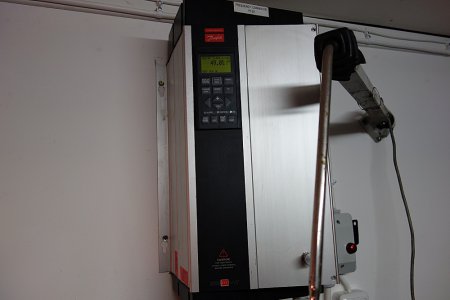
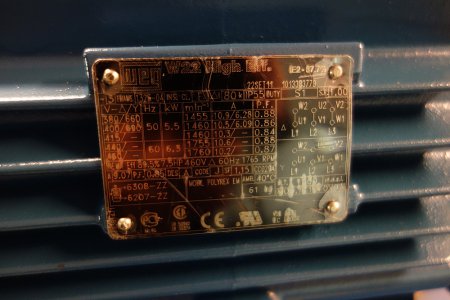
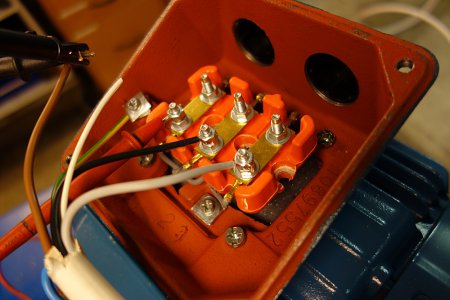
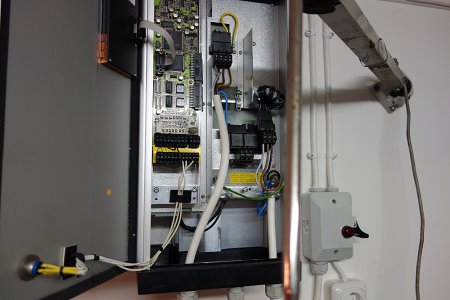
Edit: I can see on the movie that the Multimeter is incorrectly set to voltage measurement when the video was recorded. The motor runs anyway since the probes are connected to the current-shunt.




Edit: I can see on the movie that the Multimeter is incorrectly set to voltage measurement when the video was recorded. The motor runs anyway since the probes are connected to the current-shunt.
Last edited:
Micke,
What a lovely shop you have, I envy your floor area, Glad you are going down the path of keeping the flat belt cone pulleys, If you polish them up a little bit, they are her jewels Many years ago in one of the factories I worked in I operated a lathe about the same size and configuration as yours, With the soft vibration less flat belt, I could by using a broad faced tool and cutting oil on the work piece, + a fine feed on a finishing cut achieve a finish like a mirror , With that ancient machine it was a case of "Slow and steady won the race", But on a roughing cut, it could coil the cuttings off a work piece fairly briskly.
There is something homely about these old lathes which is missing in today's modern lathes which to me are enclosed buzz boxes.
What a lovely shop you have, I envy your floor area, Glad you are going down the path of keeping the flat belt cone pulleys, If you polish them up a little bit, they are her jewels Many years ago in one of the factories I worked in I operated a lathe about the same size and configuration as yours, With the soft vibration less flat belt, I could by using a broad faced tool and cutting oil on the work piece, + a fine feed on a finishing cut achieve a finish like a mirror , With that ancient machine it was a case of "Slow and steady won the race", But on a roughing cut, it could coil the cuttings off a work piece fairly briskly.
There is something homely about these old lathes which is missing in today's modern lathes which to me are enclosed buzz boxes.

